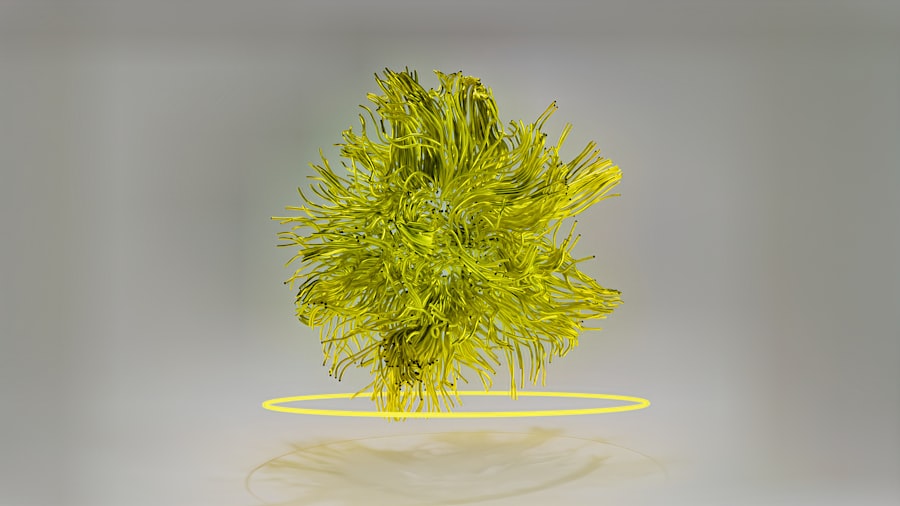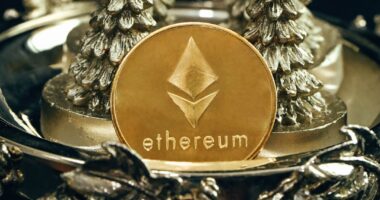Ethereum, a decentralized blockchain platform launched in 2015, has emerged as a transformative force across various sectors, with the art world being one of the most significantly impacted. Unlike Bitcoin, which primarily serves as a digital currency, Ethereum enables developers to create decentralized applications (dApps) through its smart contract functionality. This capability has opened new avenues for artists, collectors, and art enthusiasts, allowing for innovative ways to create, buy, sell, and trade art.
The implications of Ethereum’s technology extend beyond mere transactions; they challenge traditional notions of ownership, authenticity, and value in the art market. The impact of Ethereum on the art world is profound, as it fosters a more inclusive and accessible environment for artists and collectors alike. By leveraging blockchain technology, artists can reach global audiences without the constraints imposed by traditional galleries and auction houses.
This shift not only democratizes access to art but also empowers artists to retain greater control over their work and its distribution. As a result, Ethereum is not just a technological innovation; it represents a cultural shift that redefines the relationship between creators and consumers in the art ecosystem.
Key Takeaways
- Ethereum has had a significant impact on the art world, revolutionizing the way art is bought, sold, and funded.
- Tokenization of art has implications for both artists and collectors, providing new opportunities for investment and ownership.
- Decentralized autonomous organizations (DAOs) play a key role in funding and supporting artists, offering a new model for artistic patronage.
- Smart contracts have the potential to revolutionize art sales and royalties, providing transparency and efficiency in transactions.
- The integration of blockchain technology has led to the rise of digital art, transforming the way art is created, bought, and sold.
Tokenization of art and its implications for artists and collectors
Tokenization refers to the process of converting rights to an asset into a digital token on a blockchain. In the context of art, this means that physical artworks can be represented as unique digital tokens, often referred to as non-fungible tokens (NFTs). Each NFT is distinct and cannot be exchanged on a one-to-one basis like cryptocurrencies.
This uniqueness allows artists to create verifiable digital representations of their work, which can be bought, sold, or traded on various platforms. The implications of tokenization are significant for both artists and collectors. For artists, tokenization offers a new revenue stream and greater control over their creations.
By minting their artwork as NFTs, artists can sell directly to collectors without intermediaries taking a substantial cut of the profits. Moreover, smart contracts associated with these tokens can be programmed to ensure that artists receive royalties from future sales, providing them with ongoing financial benefits as their work appreciates in value. This model contrasts sharply with traditional art sales, where artists often see little return once their work is sold.
For collectors, tokenization provides an opportunity to invest in art in a more accessible manner. Fractional ownership allows multiple investors to own a share of high-value artworks, making it possible for individuals to participate in the art market who may not have had the means to do so previously.
Decentralized autonomous organizations (DAOs) and their role in funding and supporting artists

Decentralized Autonomous Organizations (DAOs) represent a novel governance structure enabled by blockchain technology. DAOs operate through smart contracts and are designed to be self-governing entities that can make decisions collectively without centralized control. In the art world, DAOs have emerged as innovative platforms for funding and supporting artists. They allow communities of art enthusiasts and investors to pool resources and make collective decisions about which projects to support. One notable example is the “Friends With Benefits” DAO, which focuses on funding creative projects within the digital art space.
Members contribute funds in exchange for governance tokens that grant them voting rights on which projects receive financial backing. This model not only democratizes funding but also fosters a sense of community among artists and supporters. Artists can pitch their ideas directly to potential backers, bypassing traditional gatekeepers like galleries or grant organizations.
The DAO structure encourages collaboration and experimentation, enabling artists to explore new mediums and concepts without the fear of financial failure.
Smart contracts and their potential to revolutionize art sales and royalties
| Metrics | Description |
|---|---|
| Transparency | Smart contracts can provide transparent and immutable records of art sales and royalties. |
| Automation | Smart contracts can automate royalty payments to artists based on predefined terms. |
| Security | Smart contracts can ensure secure and tamper-proof transactions in art sales and royalties. |
| Global Access | Smart contracts can enable global access to art sales and royalties, eliminating geographical barriers. |
| Cost Efficiency | Smart contracts can reduce the need for intermediaries, leading to cost savings in art transactions. |
Smart contracts are self-executing contracts with the terms of the agreement directly written into code on the blockchain. In the realm of art sales, smart contracts have the potential to revolutionize how transactions are conducted and how royalties are distributed. When an artist sells an artwork as an NFT, a smart contract can automatically execute the terms of the sale, ensuring that both parties fulfill their obligations without the need for intermediaries.
One of the most significant advantages of smart contracts is their ability to enforce royalty payments automatically. For instance, an artist can set a percentage royalty that they will receive from any future resale of their artwork. This means that if a collector sells an NFT at a higher price later on, the smart contract will ensure that the original artist receives their predetermined percentage automatically.
This capability not only provides financial security for artists but also incentivizes them to create more work, knowing they will benefit from its future success. The transparency of blockchain technology further enhances trust in these transactions, as all parties can verify the terms and conditions encoded in the smart contract.
The rise of digital art and its integration with blockchain technology
The rise of digital art has been one of the most notable trends in recent years, with artists increasingly embracing digital mediums to create their work. Blockchain technology has played a crucial role in legitimizing digital art by providing a framework for ownership and authenticity that was previously lacking. Before NFTs became mainstream, digital artworks were often seen as easily replicable and thus difficult to monetize effectively.
However, with the advent of blockchain-based tokenization, digital art can now be bought and sold as unique assets. Platforms like OpenSea and Rarible have emerged as marketplaces where digital artists can mint their work as NFTs and connect with collectors worldwide. This integration of digital art with blockchain technology has not only expanded the definition of what constitutes art but has also created new opportunities for artists to experiment with interactive and immersive experiences.
For example, some artists are creating generative art pieces that evolve over time or respond to viewer interactions, pushing the boundaries of traditional artistic expression. The ability to embed metadata within NFTs also allows artists to include additional information about their work, such as creation dates or inspiration sources, enriching the narrative surrounding each piece.
Ethereum’s impact on art authentication and provenance

One of the most pressing issues in the art world is authentication and provenance—the history of ownership that establishes an artwork’s legitimacy. Counterfeit artworks have plagued the market for centuries, leading to significant financial losses for collectors and artists alike. Ethereum’s blockchain technology offers a solution by providing an immutable ledger that records every transaction associated with an artwork from its creation onward.
When an artwork is tokenized as an NFT on Ethereum, its provenance is permanently recorded on the blockchain. This means that potential buyers can trace the history of ownership back to the original artist without relying on potentially flawed documentation or expert opinions. The transparency afforded by blockchain technology enhances trust in transactions and reduces the risk of fraud significantly.
Additionally, this level of traceability can increase an artwork’s value by providing collectors with confidence in its authenticity. Moreover, some platforms are developing tools that integrate physical artworks with their digital counterparts on the blockchain. For instance, using QR codes or RFID tags linked to NFTs can help verify that a physical piece corresponds with its digital representation on Ethereum.
This dual-layer authentication system not only bolsters confidence among buyers but also creates new opportunities for artists to engage with their audience through both physical and digital realms.
The democratization of the art world through Ethereum and its implications for creativity
Ethereum’s influence extends beyond financial transactions; it is fundamentally reshaping how creativity is expressed and shared within the art world. By lowering barriers to entry for both artists and collectors, Ethereum fosters a more inclusive environment where diverse voices can thrive. Artists from various backgrounds—regardless of geographic location or socioeconomic status—can showcase their work globally without needing traditional gallery representation.
This democratization has profound implications for creativity itself. As more artists gain access to platforms for sharing their work, we see an explosion of diverse styles, themes, and mediums emerging within the art community. The ability to connect directly with audiences allows artists to receive immediate feedback and engage in dialogue about their work, fostering a collaborative spirit that transcends geographical boundaries.
Furthermore, this shift encourages experimentation; artists are more willing to explore unconventional ideas when they know they have a supportive community behind them. The rise of social media platforms integrated with blockchain technology also plays a crucial role in this democratization process. Artists can build personal brands and cultivate followings without relying solely on traditional marketing channels.
This newfound autonomy empowers creators to define their narratives and engage directly with their audience, leading to richer artistic expressions that resonate more deeply with viewers.
Predictions for the future of art and creativity in a blockchain-powered world
As we look ahead, it is clear that Ethereum and blockchain technology will continue to shape the future of art and creativity in profound ways. One potential development is the increased integration of augmented reality (AR) and virtual reality (VR) experiences within the NFT space. Artists may create immersive environments where viewers can interact with their work in ways previously unimaginable—transforming static pieces into dynamic experiences that engage multiple senses.
Additionally, we may see further advancements in AI-generated art being integrated into blockchain ecosystems. As artificial intelligence continues to evolve, it will likely play a significant role in generating unique artworks based on algorithms or user inputs. This intersection between AI and blockchain could lead to entirely new forms of artistic expression that challenge our understanding of authorship and creativity.
Moreover, as more institutions recognize the value of blockchain technology for authentication and provenance tracking, we may witness increased collaboration between traditional galleries and blockchain platforms. This partnership could lead to hybrid models where physical exhibitions incorporate digital elements or NFTs alongside traditional artworks—creating multi-dimensional experiences that appeal to both traditional collectors and tech-savvy audiences. In conclusion, Ethereum’s impact on the art world is multifaceted and far-reaching.
From tokenization and DAOs to smart contracts and enhanced authentication methods, blockchain technology is redefining how we create, buy, sell, and appreciate art. As we move forward into this new era of creativity powered by blockchain technology, it is essential for artists, collectors, and enthusiasts alike to embrace these changes while remaining open to new possibilities that lie ahead.
In a related article on Ethereum’s impact on various industries, “Hello World: How Blockchain Technology is Revolutionizing the World” explores the broader applications of blockchain technology beyond just the art and creative industries. The article delves into how blockchain is transforming sectors such as finance, healthcare, and supply chain management, showcasing the versatility and potential of this groundbreaking technology. To read more about the transformative power of blockchain, check out the article here.
FAQs
What is Ethereum?
Ethereum is a decentralized, open-source blockchain system that features smart contract functionality. It is the second-largest cryptocurrency platform by market capitalization, after Bitcoin.
How does Ethereum influence the art and creative industries?
Ethereum has the potential to revolutionize the art and creative industries by enabling artists to tokenize their work, create digital scarcity, and receive direct payments from collectors. It also allows for the creation of decentralized autonomous organizations (DAOs) to fund and govern creative projects.
What are some examples of Ethereum’s impact on the art and creative industries?
Examples of Ethereum’s impact on the art and creative industries include the rise of digital art marketplaces, the tokenization of artwork, the use of blockchain for provenance and authentication, and the creation of decentralized platforms for funding and distributing creative projects.
How is Ethereum expected to influence the art and creative industries by 2025?
By 2025, Ethereum is expected to further streamline the process of buying, selling, and collecting art through blockchain technology. It may also lead to the democratization of art investment and the creation of new business models for artists and creators.
What are the potential challenges and risks associated with Ethereum’s influence on the art and creative industries?
Potential challenges and risks include regulatory uncertainty, the environmental impact of blockchain technology, the need for education and awareness among artists and collectors, and the potential for market manipulation and fraud in the digital art space.





